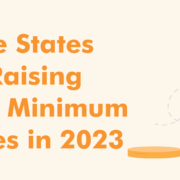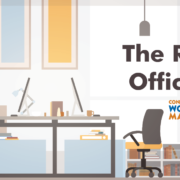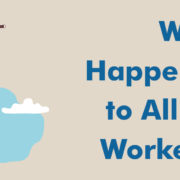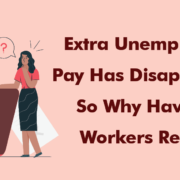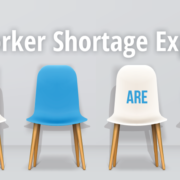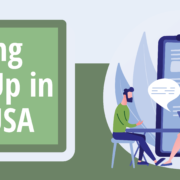These States are Raising Minimum Wages in 2023
About half of all states are expected to implement a higher minimum wage in 2023.
A total of 26 states have announced that higher minimum wages will be introduced during 2023, with one more state likely to see an adjustment in July.
Meanwhile, 23 states and Washington, D.C., will implement higher minimum wages on Jan. 1. Those increases, which will range from 23 cents to $1.50 per hour, will affect 8 million workers.
- AK – $10.85 per hour, up from $10.34 per hour.
- AZ – $13.85 per hour, up from $12.80 per hour.
- CA – $15.50 for all employers regardless of size. While the hourly minimum wage for employers with fewer than 26 employees was originally scheduled to rise to only $15 in 2023, California labor law requires the minimum wage for these employers to equal that of large employers (those with 26 or more employees) when the rate of inflation exceeds 7% in the year that the hourly minimum wage for large employers is $15.00. The average consumer price index from July 1, 2021, to June 30, 2022, increased by 7.9%.
- CO – $13.65, up from $12.56.CT$14 per hour, scheduled to increase to $15 on June 1, 2023.
- DE – $11.75 per hour, up from $10.50, pursuant to legislation signed in July 2021 that will increase the minimum wage to $15.00 by 2025 (S.B. 15, L. 2021).
- FL – $11.00 per hour, up from $10.00. Wage rates are adjusted annually based on inflation. A constitutional amendment approved by voters in the November 3, 2020, General Election will increase the minimum wage to $12.00 on September 30, 2023, and to $15.00 by 2026.
- IL – $13.00 per hour, up from $12.00. The minimum wage is scheduled to reach $15 in 2025.
- ME – $13.80 per hour, up from $12.75.
- MD – In 2023, the minimum wage is $13.25 for large employers and $12.80 for small employers, increasing at different increments to reach $15 in 2025 for large employers and in 2026 for small employers.
- MA – $15.00 per hour, an increase of 75 cents.
- MI – $9.87 per hour increasing to $10.10 January 1, 2023, and (possibly) to $13.03 on February 19, 2023. (The Michigan Court of Claims struck down a legislative amendment to two voter-initiated laws that brought the state’s minimum wage to $12.00 by 2022. The voter-initiated law was thus reinstated, with an effective date of February 19, 2023. The law tied minimum wage increases to inflation beginning in 2023, which would set the minimum wage at $13.03 in 2023, pending the outcome of an appeal of the court’s decision.)
- MN – $10.59 per hour (up from $10.33) for employees of large employers with an annual gross volume of sales not less than $500,000. Small employers must pay employees a minimum wage of at least $8.63 per hour (up from $8.42).
- MO – $12.00 per hour, up from $11.15 per hour.
- MT – $9.95 per hour for businesses with annual gross sales of more than $110,000. Wage rates are adjusted annually based on inflation.
- NV – $10.50 per hour for employees who do not receive health benefits, to increase to $11.25 on July 1, 2023. $9.50 per hour for employees who do receive health benefits, to increase to $10.25 on July 1, 2023.
- NJ – $14.13 per hour for most employees, up from $13.00 per hour. The minimum wage had been scheduled to reach $14.00 per hour in 2023 but was adjusted due to a significant increase in the Consumer Price Index. The minimum wage for direct-care workers in long-term health care facilities is $3 higher than the state minimum wage (A 4482, L. 2020).
- NM – $12.00 per hour, up from $11.50.
- NY – Tiered/Rates vary by region: $15 per hour in New York City and in Nassau, Suffolk, and Westchester counties; $14.20 per hour in the remainder of the state. Effective October 1, 2022, the minimum wage for home care aides as defined in New York’s Public Health Law §3614-c increased by $2 per hour above the basic minimum hourly rate.
The minimum wage for workers in fast food establishments is $15 per hour in all of New York state. The minimum wage at all airports (LaGuardia, JFK, and Newark Liberty International) reached $19.00 in 2023.
- OH – $10.10 per hour, up 80 cents from $9.30 per hour. Wage rates are adjusted annually based on inflation. The minimum wage rate applies to employees of businesses with annual gross receipts of $372,000 per year (changed from $342,000 in 2022). For employees at smaller companies and for 14- and 15-year-olds, the state minimum wage is $7.25 per hour, which is tied to the federal rate.
- OR – The state minimum wage is tiered, with the highest rate in the Metro Portland area at $14.75 per hour, the lowest in rural (non-Urban) areas at $12.50 per hour, and a “standard” minimum wage of $13.50 per hour in the rest of the state. Starting July 1, 2023, the minimum wage in Portland will be set at $1.25 over the standard minimum wage, and the non-Urban rate will be set at $1 less than the standard minimum wage. Also starting July 1, 2023, the minimum wage adjustment will be tied to inflation.
- RI – $13.00 per hour up from $12.25. The state minimum wage will reach $15.00 per hour in 2025.
- SD – $10.80 per hour, up 85 cents from $9.95 per hour. Wage rates are adjusted annually based on inflation.
- VT – $13.18 per hour. This is a 63-cent scheduled increase over the $12.55 per hour 2022 rate.
- VA – $12.00 per hour, up from $11.00. The increase is part of a series of scheduled increases to reach $15.00 per hour by 2026.
- WA – $15.74 per hour. Workers under 16 years old can be paid 85 percent of the adult minimum wage, or $13.38 per hour, in 2023.
The state poised to provide the highest minimum pay rate is Washington, at $15.74 per hour, according to Wolters Kluwer.
Workers under the age of 16 in that state will be paid $13.38 per hour starting in 2023, or 85% of the adult minimum wage.
The minimum wage in Washington, D.C., will be $16.10 per hour.
Washington, D.C., and 13 states tie their minimum wages to the consumer price index, a government measure for the average change consumers pay for certain goods and services.

